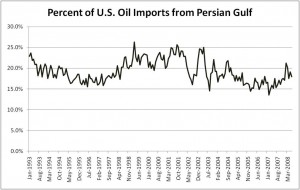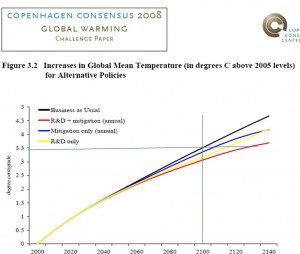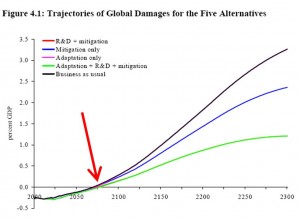Gustav’s Historical Analogues
August 31st, 2008Posted by: Roger Pielke, Jr.
Hurricane Gustav is heading for the Louisiana coast. This post briefly discusses some of the relevant historical analogues, and the normalized damage amounts from our research for some of those analogues. Here is the latest Gutav track forecast map from the National Hurricane Center.
Using the very useful historical hurricane track tool from the NOAA Coastal Services Center (CSC) indicates that this region has seen plenty of hurricane activity since 1900. The following figure shows all tracks of storms that reached Category 3 or higher intensity that passed within 200 nautical miles of Houma, Louisiana (which is roughly the present size of the NHC cone at landfall).
Focusing in on a much smaller location, simply for purposes of providing a few historical analogues, here is a map of storms that passed closest to the center of the current area of uncertainty.
Here is a table of normalized damage from this subset of storms (from this source in PDF):
Year Cat Norm$
1909 3 $1.1B
1915 4 $2.5B
1965 3 $17.9B (Betsy)
1974 3 $1.0B (Carmen)
1992 3 $1.9B (Andrew)
2005 3 $81.0B (Katrina)
How might we interpret this data? Here are a few thoughts:
1. There is a huge difference between the utter devastation of New Orleans (Katrina), partial devastation of New Orleans (Betsy), and a landfall further to the west. However, Rita (2005, Cat3) made landfall closer to the LA-TX border and resulted in $10.0B in damage.
2. The strength of the storm makes a huge difference. Over our entire dataset, we find that Category 4 storms result in 5.4 times the average damage of a Category 3 storm.
3. Population makes a big difference. Regions with more than 3 million people have 2.6 times the damage of regions with less than 1 million for Category 3 storms, and 4.7 times for Category 4 storms. We did not look at finer levels of population. If you’d like to have a look at the population of various locations under warning for Gustav you can use the NOAA CSC coastal population tool.
So how much damage will Gustav cause?
This is an impossible question to answer with any hope of accuracy, not knowing the exact point of landfall or the intensity at that time. But if Gustav does avoid a direct hit on New Orleans and makes landfall as a Category 3 (very important qualifications), then it would be safe to conclude that losses won’t even remotely approach those of Katrina, and will likely be an order of magnitude less, and perhaps even lower. If levees are overtopped or burst in New Orleans, then damage could rapidly escalate.


